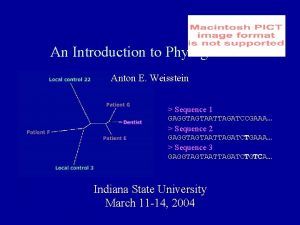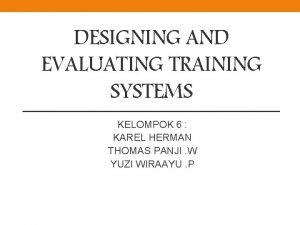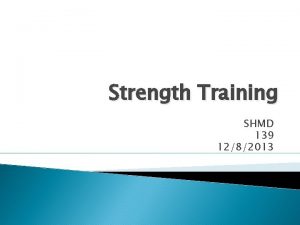Strength Training Methods of evaluating strength Maximum strength








- Slides: 8

Strength Training

Methods of evaluating strength Maximum strength – 1 RM test • Subject chooses weight achievable in one repetition on a specific piece of gym equipment or free weight to assess an isolated muscle’s maximum strength. • Increase the weight until only one maximal repetition can be achieved. • Ensure full recovery between repetitions to prevent fatigue. Strength endurance – UK abdominal curl test • Subject performs continuous sit ups at progressive intensities to exhaustion. • Each sit-up is timed to an audio cue. 7 • Strength endurance level indicated from standardised comparison table. Maximum strength – grip dynamometer • Use a dynamometer to squeeze the hand grip. • Three attempts are recorded. • Can use dominant and non-dominant hand. • Results assessed using standardised comparison table Explosive strength – Vertical jump test • Using wall-mounted vertical jump board, performer marks highest point reached with one outstretched arm. • Performer then marks highest point jumped. • The difference in resting and jump height represents explosive strength and can be assessed using standardised comparison table.

Neural Pathways Structural adaptation Functional effect Increased recruitment of motor units and FG and FOG fibre types Decreased inhibition of the stretch reflex Overall – increased speed, strength and power output

Muscle & connective tissue Structural adaptation Functional effect Muscle hypertrophy (20 -45% increase cross sectional area) Muscle hyperplasia Increase numbers and size of contractile proteins and myofibrils Increased strength of tendons & ligaments Increased bone density and mass Overall – increased muscle mass, increased speed, strength and power output, increases in intensity of performance, hypertrophic physique which may increase selfesteem

Metabolic function Structural adaptation Functional effect Increased ATP, phosphocreatine and glycogen stores Increased enzyme activity Increased buffering capacity Increased muscle mass Overall: increased anaerobic fuel stores and energy production, increased anaerobic threshold and delayed OBLA, which increases intensity and duration of performance, increased metabolic rate, increasing energy expenditure and managing weight

Neural Pathways Increased force of contraction and improved coordination and simultaneous stimulation of motor units Increased force of contraction from the agonist muscle which decreases the inhibition from the antagonist and increases the stretch of the agonist

Muscle & connective tissue Maximum and explosive training will increase the size of FG fibres and strength endurance training will increase the size of FOG fibres. Increased number and thickness of actin-myosin filaments and cross-bridges. Also an increased number of myofibrils and increased protein synthesis. Increased joint stability and therefore a decreased risk of injury. Increased absorption of calcium and therefore a decreased risk of osteoporosis

Metabolic function Increased capacity for alactic energy production and an increased energy for speed and power-based activities. Increased activity for ATPase, creatine kinase and glycolytic enzymes which reduces the onset of fatigue. Delayed OBLA due to increased tolerance and removal of lactic acid. Improved body composition due to increased metabolic rate.















